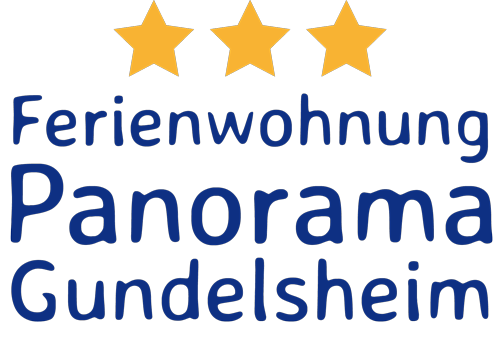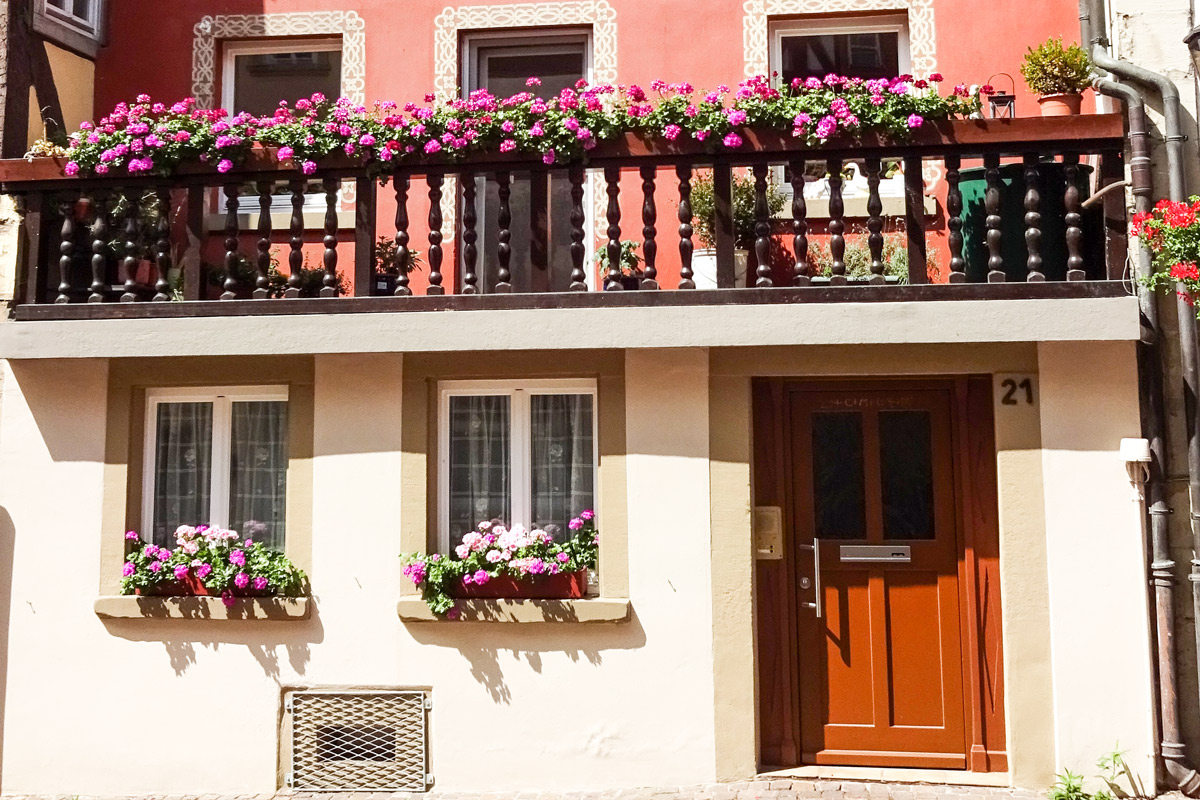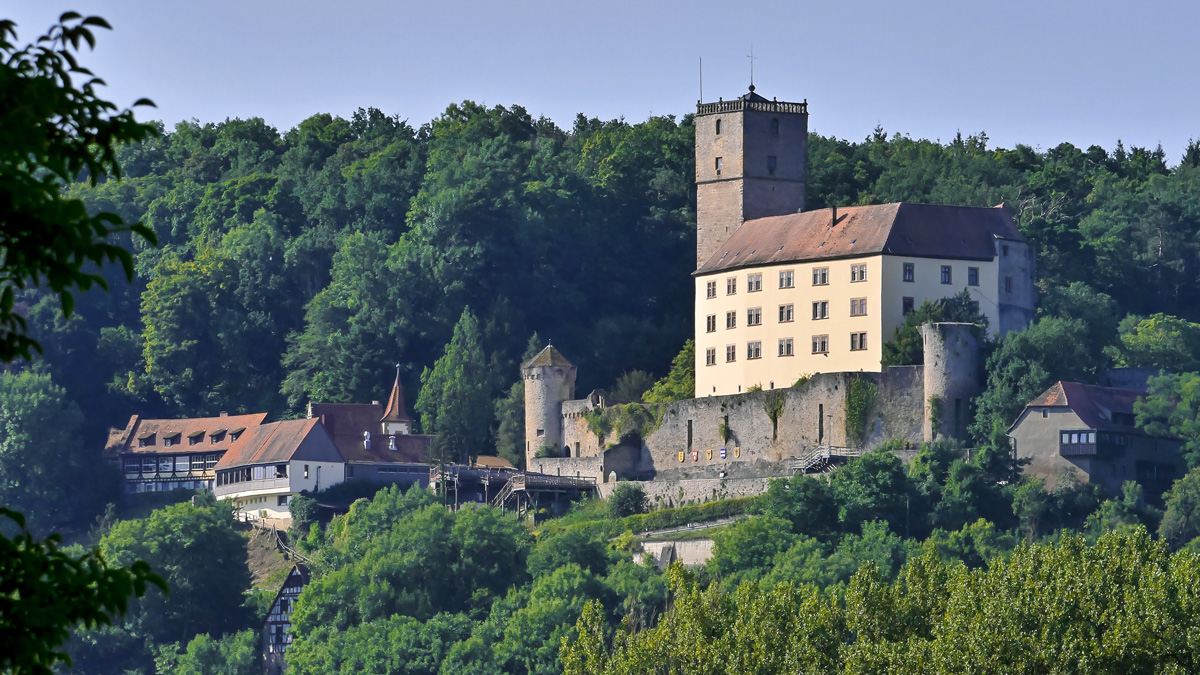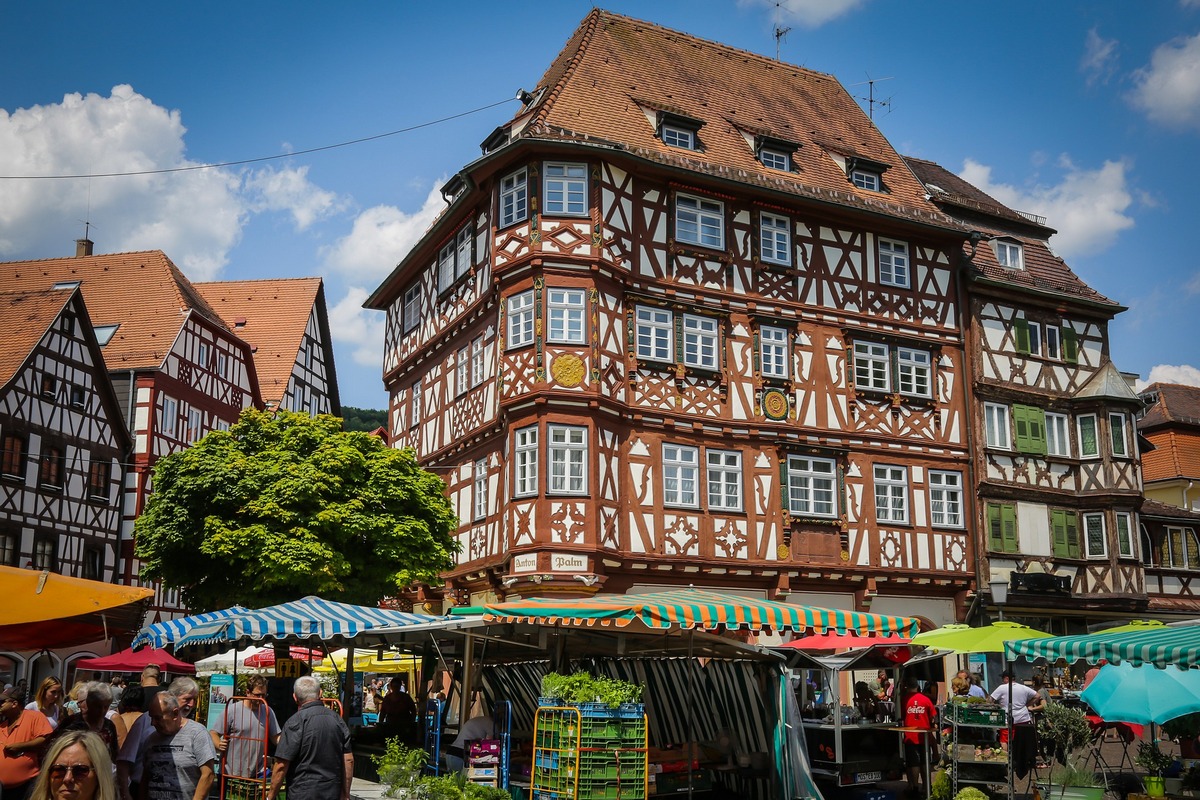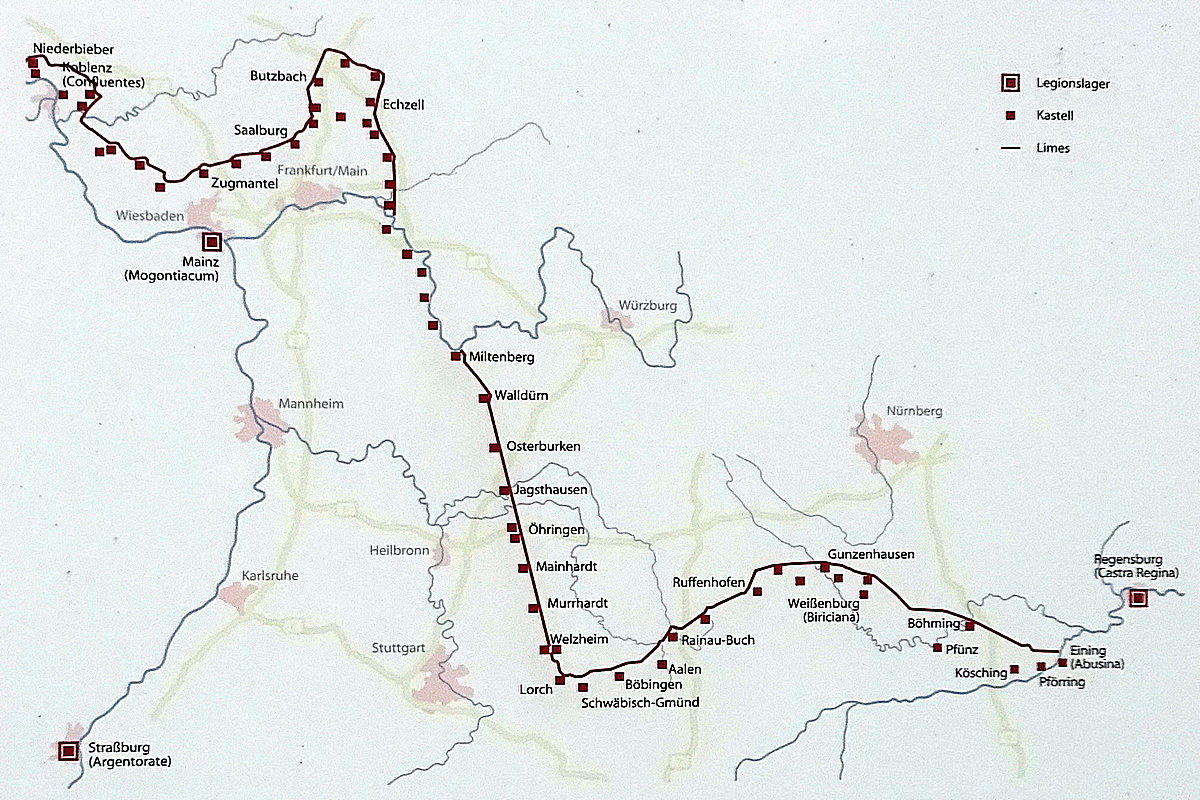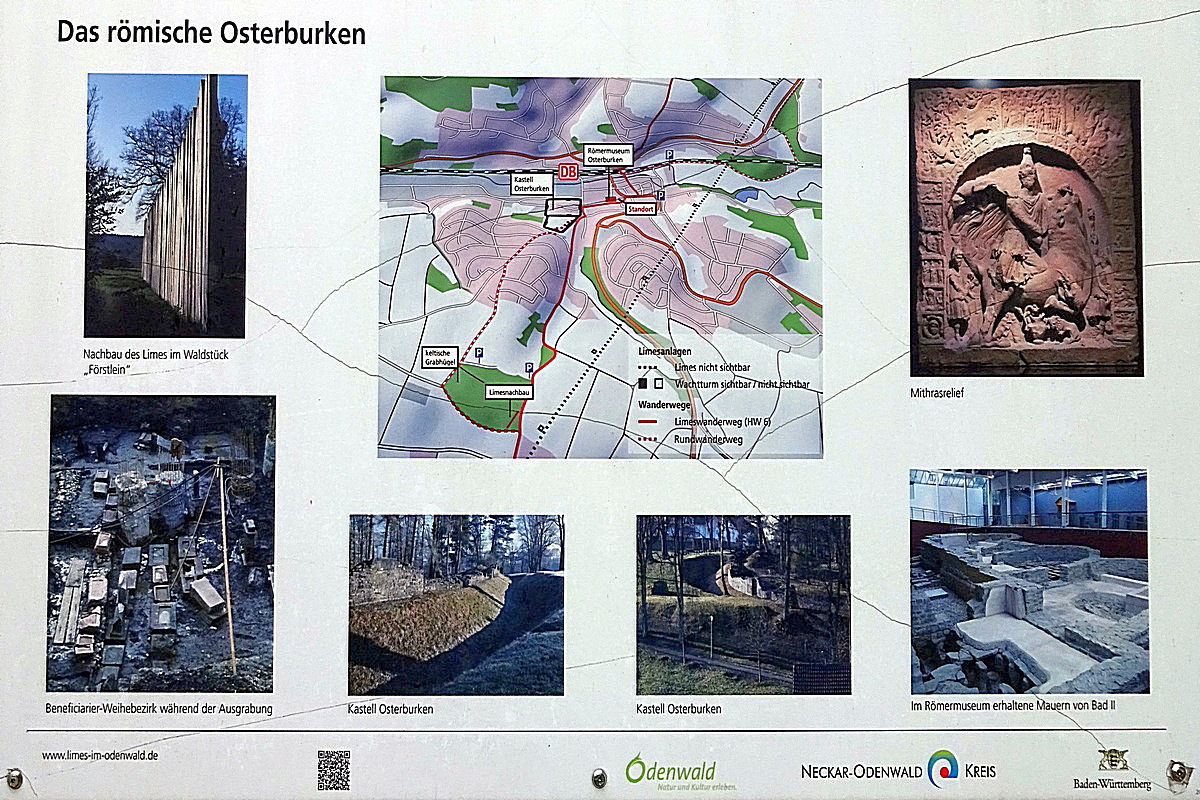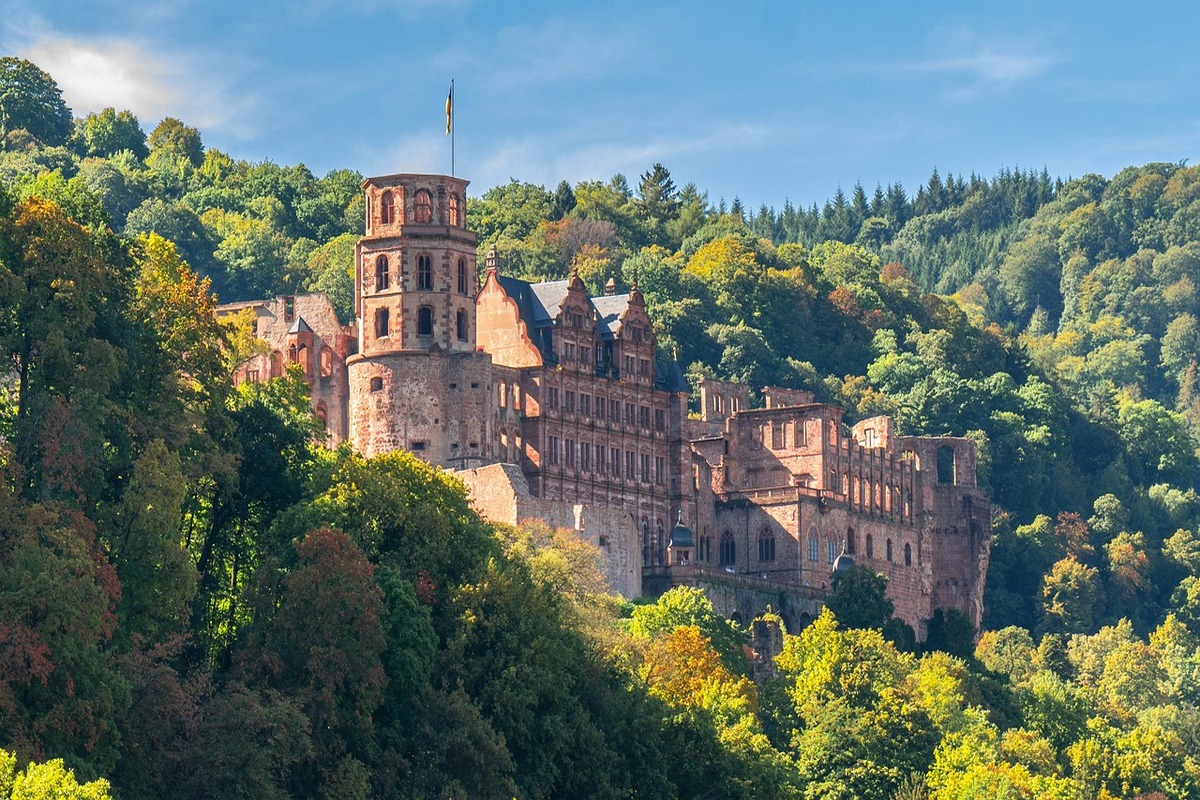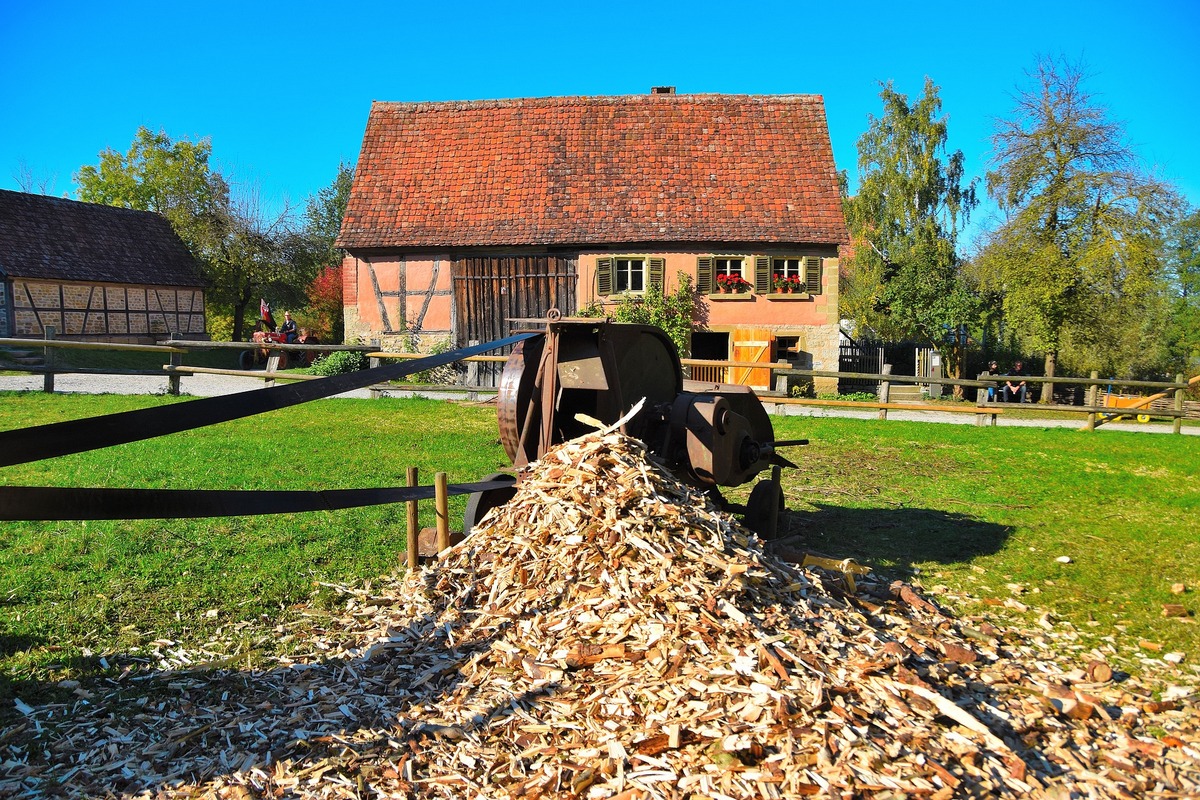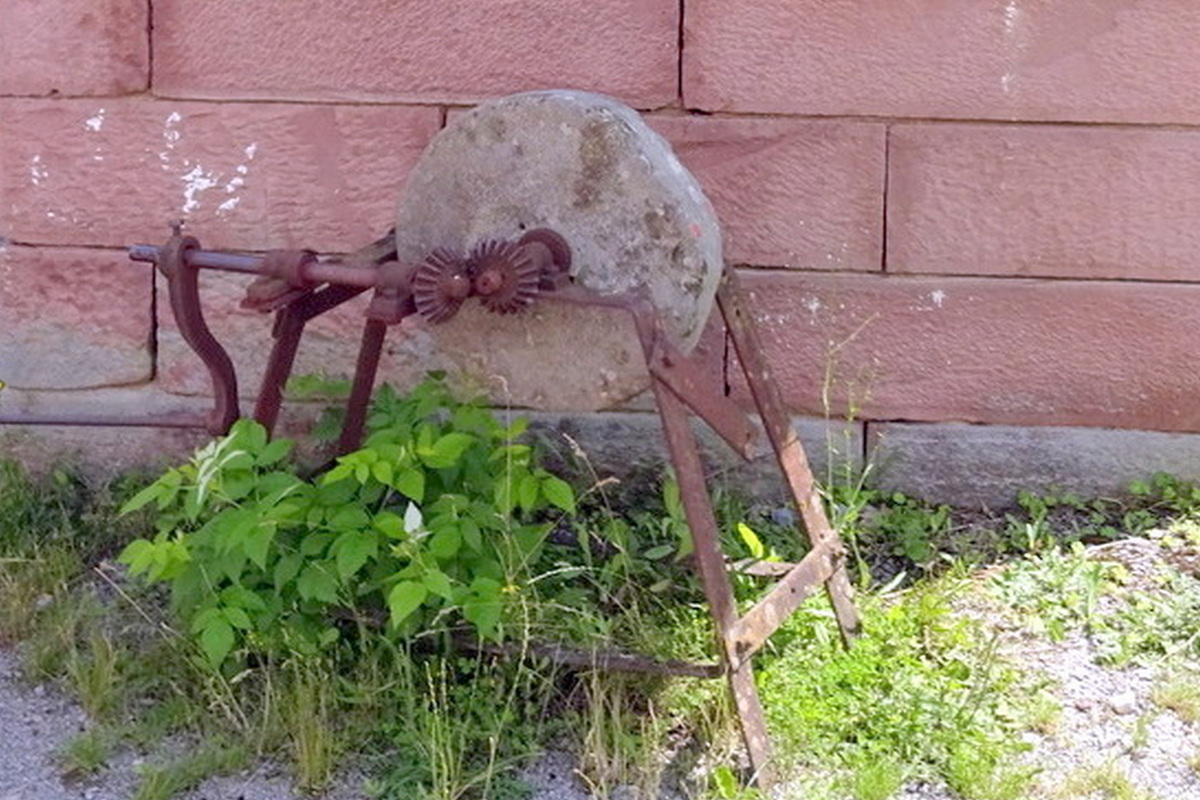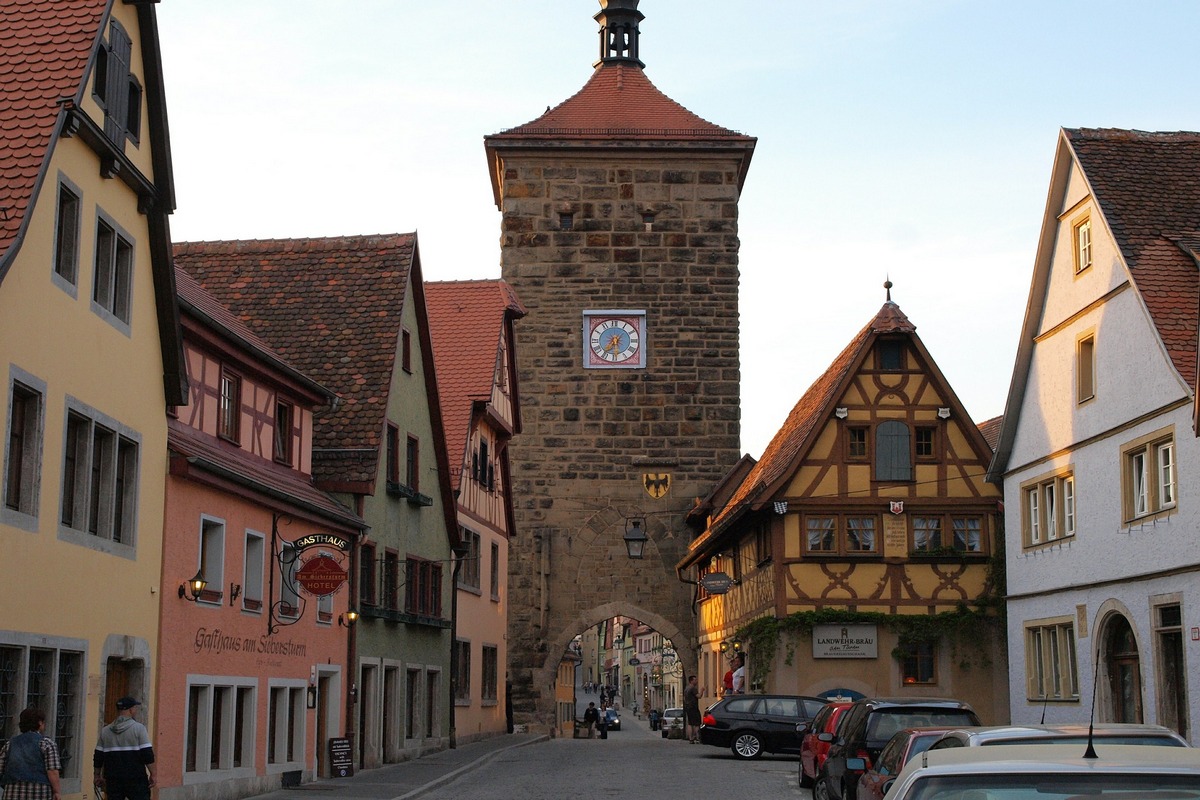Welcome to Gundelsheim
The town of Gundelsheim is located on the Neckar River in the transition area to the Odenwald. The old and worth seeing towns of Bad Wimpfen (6 km), Mosbach (12 km) and Heidelberg (50 km) are not far away.
The cities of Ludwigsburg, Stuttgart, Karlsruhe, Mannheim and Würzburg are easily accessible by car and train.
Gundelsheim's landmark is Schloss Horneck with the Transylvanian Museum and the historic old town. Many buildings and street names tell a rich story.
Hikers enjoy a well-developed network of trails around Gundelsheim. These lead across fields, through the vineyards or through forests near the city.
Cyclists will find the city via the Salz-/Sole Radrundweg or the Neckartalradweg. Both are connected to the Kocher/Jagst Radweg.
Popular are the Besenwirtschaften, where you can enjoy home-grown wines and home-style meals.
The outdoor terrace pool (1.7 km) offers a lot of leisure time fun, and not just for families. Other bathing opportunities are the indoor pool in Haßmersheim (6.1 km) and the brine pools in Bad Wimpfen (7.8 km) and Bad Rappenau (9.3 km) with indoor and outdoor areas.
Buses to the surrounding area and trains to Mosbach and Heilbronn run from the train station (1.1 km).
If you like, you can hire the Patriot ferry boat and drive to 5 places between Gundelsheim and Neckarzimmern. This can be the starting point for hikes and stops in Gundelsheim, Neckarmühlbach, Böttingen, Haßmersheim and Neckarzimmern.
City tours (Registration: tourist office Tel.: 06269-9641)
- Public city and adventure tour - 1.5 h
- City tour of Gundelsheim - 1.5 h
- On the track of proverbs - 1 h
- Guided tour of the pilgrimage chapel of St. Michael - 1 h
- Neckar and poetry -1 h
- Of tow drivers, raftsmen, ferrymen and chain shipmen - 1 h
- Wild herbs in the old town - 1 h
- "Heavenly wine and merry errands"- 2 h
- "Schnaps jug, halberd and fat bowl"- 1.5 h
- Come, be a guest in Gundelsheim! - 20 min
- Adventure tour "555 years of the German Order of Knights"- 1.5 h
- Guided tour through the old town - 1.5 h
Nearby ...
... easy to reach on foot or by bike
Castle Guttenberg (2 km)
... is a hilltop castle over Neckarmühlbach, a district of Haßmersheim in the Neckar-Odenwald district. The castle was never destroyed and has been continuously inhabited for almost 800 years, since the mid-15th century by the Gemmingen-Guttenberg line of the Barons of Gemmingen. The castle accommodates the German Greifenwarte as well as a castle museum and a restaurant.
Castle Hornberg (6 km)
... was a Graugrafenburg and later a knight's castle on a 228.6 m high mountain over the Neckar valley above the village of Neckarzimmern between Gundelsheim and Mosbach. Götz von Berlichingen lived for 45 years at Burg Hornberg, for which he was already enthusiastic as a teenager.
The pilgrimage "Unserer lieben Frau im Nussbaum" (7 km)
... located south of the village Höchstberg near Gundelsheim, goes back to a grace chapel first mentioned in 1328. It was already in the late Middle Ages a popular pilgrimage.
Towards the end of the 17th century, a new church in the village was planned. According to tradition, however, Mary appeared with Jesus in her arms a shepherd in a walnut tree, which led to the decision to expand the chapel instead of building a church in the village.
Bad Wimpfen (8 km)
... today spa town, was once Staufer Palatinate and later to 1803 imperial city. Its older part, Wimpfen in the valley, stretches along the Neckar river on its left side. Just west of it stands Wimpfen on the mountain on the slope to the left of the river valley. There, in the Middle Ages, the Staufer Palatinate and the mountain town were built over the north-turning river. The place is also known by the already taking place in the Middle Ages Valley market, the monastery and the historic Christmas market.
The salt mine Bad Friedrichshall (9 km)
... is one of three visitor mines in Germany and the only one in Baden-Württemberg. Visitors can experience in it 200 million years of earth history. For example, in the Crystal Hall the glittering world of millions of years grown crystals. The dome hall of the salt mine has monumental reliefs as well as a 42 meter long slide with eleven meters difference in elevation. In the technical chamber you can see real conveyors and loading vehicles; salt mining is explained earlier and today.
Today in the salt mine Bad Friedrichshall is reminded with a permanent exhibition and the forced labor in the Kochendorf concentration camp. Among other things, the prisoners produced aircraft turbines in a dismantled salt hall at a depth of 180 meters.
The memorial is integrated into the tour of the visitor mine.
Mosbach (12 km)
... located 58 km east of Heidelberg, is the county seat of the Neckar-Odenwald-region. In 1410 earl Otto I. Mosbach raised to his residence. The city grew and prospered. The prosperity of the numerous artisans was expressed in the half-timbered houses, some of which were built at that time, which still give their characteristic face to Mosbach's Old Town. Worth seeing in Mosbach is especially the market place.
Neckarsulm (13 km)
.. 771 first mentioned in documents, received around 1300 the city law. In 1484 the city came to the Teutonic Knights. Formerly dominated by viticulture, the town developed into an industrial city in the late 19th century. It became known through the company NSU, the largest two-wheeler producer in the world. The NSU tradition is continued by the Audi factory. A visit is always worthwhile in the two-wheeler museum and in the Audi forum. Children and families have a lot of fun in Aquatoll.
Heilbronn (20 km)
... first mentioned in 741, gained the status of the imperial city in 1371 and, because of its location on the river Neckar, developed from the late Middle Ages into an important trading center. Heilbronn is known as the city of wine because of its extensive vineyards. The city is also called Käthchenstadt, after the name of the title person in Heinrich von Kleist's play "Das Käthchen von Heilbronn".
Highly recommended is a visit to the experimenta Heilbronn, Germany's largest science center. On about 25,000 square meters you can immerse yourself in a very special world of knowledge and experience: 275 interactive exhibits, science dome with show and experimental stage and observatory and much more for visitors from 4 to 99.
From April 17 to October 6, the Federal Garden Show 2019 will take place in Heilbronn. On around 40 hectares between the old Neckar and the Neckar Canal, the garden exhibition and a three hectare city exhibition with 23 architecturally innovative buildings will be presented.
Recommended excursions ...
Sinsheim ...
... is located about 30 kilometers west of Gundelsheim on the river Elsenz. The 770 first mentioned place belonged to the Palatinate for centuries. Sinsheim is well-known by the car and technology museum, the bathing area as well as the Bundesliga team TSG 1899 Hoffenheim and their Rhein-Neckar-Arena. Driving time from the apartment about 30 minutes.
Der Katzenbuckel (cats hump) ...
... 33 km northwest of Gundelsheim is an extinct volcano and with 626 m the highest mountain of the Odenwald. There are several explanations for the name. After one, the figure of the mountain should have reminded the people around the curved back of a cat. Others derive the mountain name from the tribal name of the Chatten, which lives on today in the name of Hessen, a German state. On the top of the Katzenbuckels stands an 18 m high lookout tower. It offers a panoramic view of the wooded hills of the Odenwald and the neighboring low mountain ranges.
Eberbach ...
... lies west of the "Katzenbuckel" on the Castle Road, which leads from Mannheim to Prague. This section of the Neckar valley is particularly rich in castles and attractions. The city itself is rich in historic half-timbered houses. The most ornate are from the early 16th century. Several museums can be found in Eberbach such as the local museum, the Cooper museum and the Pewter-figur-kabinet. Travel time from the apartment 30 minutes along the Neckar.
Osterburken ...
Due to its location on the Upper German-Rhaetian Limes and the former Roman fort, it is also known as a Roman town. The numerous archaeological finds can be visited in the Roman Museum. Driving time from the apartment 30 minutes.
The Eberstadter stalactite cave ...
... is a cave on the edge of the southeastern Odenwald. Eberstadt is a district of Buchen. The show cave is about 600 meters long, and is estimated to be between three and five million years old. Driving time from the apartment about 40 minutes.
Schöntal Abbey (German: Kloster Schöntal) ....
... is a former Cistercian abbey in Schöntal in the district of Hohenlohe, Baden-Württemberg, Germany, 45 minutes by car from Gundelsheim. It is famous as one of the most impressive pieces of Baroque architecture. The Cistercian monastery was founded in 1153 and was settled by monks from Maulbronn Abbey. In addition to the baroque church with its rich furnishings and the magnificent convent building, the monastery also includes numerous outbuildings, gatehouses, the "Mohrenbrunnen", a large monastery garden and a baroque cemetery chapel.
Heidelberg ...
... was founded in the 12th century; their history goes back to Celtic and Roman times.
From the 13th century to the year 1720, Heidelberg was the residence of the Palatine of the Rhine and the capital of the Palatinate. The former royal residence is known for its picturesque old town with its castle and its university. This was founded in 1386 by Ruprecht I as the third university in the Holy Roman Empire after Prague and Vienna. It is the oldest university in Germany.
The oldest written mention of Heidelberg dates back to 1196. At that time, Heidelberg consisted of the Upper Castle on the Molkenkur on the slope of the Königsstuhl and a village at the foot of the mountain.
Many of today's districts of Heidelberg can be traced back to villages that had already been built in the 6th century at the time of the Franks. Some of them were first mentioned in the Lorsch Codex, Neuenheim and Handschuhsheim about in the year 765.
The predecessor building of Heidelberg Castle was built in the 13th century on the Jettenbühl. Probably at the same time, the town in the area between Königstuhl and Neckar was planned with a rectangular floor plan, the market square and a city wall. A bridge led over the Neckar. In 1392 Heidelberg was extended extensively, the urban area now corresponded to the old town.
Heidelberg can be reached from Gundelsheim via the A 6 in 50 ', via the L 532 in 1 hour or along the Neckar over the B 37 in just over 1 hour (recommended route).
Schwäbisch Hall ...
... colloquially called only Hall, is located on an old salt spring in the middle Kocher valley. The city is known for its magnificent medieval buildings, the Heller named after it, as well as for the salt miners and the open air games on the large staircase in front of St. Michael. Travel time from Gundelsheim 1 hour.
The Hohenloher Open-Air museum Wackershofen ...
... located near Schwäbisch Hall, is one of seven open-air museums in BW. In more than 60 converted, partially reconstructed buildings from the region between the Neckar and Main, Swabian Alb and Frankenhöhe, from areas such as the Hohenloher Ebene, the Swabian-Franconian forest and the Taubergrund, in Wackershofen is the history of the rural population and their way of life documented from the late Middle Ages into the 20th century.
In the Odenwälder Open-air museum Gottersdorf ...
... a district of Walldürn, 16 buildings from the Odenwald region from the 17th to the 20th century are shown. The houses were demolished in the original locations and rebuilt on the museum grounds true to the original. The museum includes buildings from the day laborers' cottage to the large farm, but also Darren for Grünkern and a brick hut. Buildings, facilities, machinery and tools give realistic insights into the most simple living and working world in the area. Travel time from Gundelsheim 50 minutes.
Ludwigsburg ...
... has the Residenzcastle as the city's landmark, the largest undamaged Baroque palace in Germany. For 26 years it was the main seat of Württemberg Dukes. Under King Frederick I, the castle was a summer residence. As part of public tours, the apartment of the King and Queen can be visited. Museums are also housed in the Residenzcastle. During the summer months, the Blooming Baroque is a busy parkland around the castle. Part of it is reserved for the nationally known fairytale garden. As part of a guided tour, the hunting and pleasure palace Favorite (built 1713-1728) can be visited. The castle complex also includes the Lakecastle Monrepos (built 1764-1768) with the associated park. Driving time from Gundelsheim approx. 50 minutes.
Rothenburg ob der Tauber ...
... was an imperial city from 1274 to 1803. It is 1 1/4 hours drive east of Gundelsheim. With its largely preserved medieval old town Rothenburg is a world-famous sight with many monuments and cultural assets. Outstanding in the old town is that it looks very original, surrounded by a walk-in city fortifications and embedded in the largely original landscape of the Tauber Valley. Rothenburg is also known for several major museums such as the Kriminalmuseum, the Reichsstadtmuseum, the Handwerkerhaus and the Christmas Museum of Käthe Wohlfahrt. Among the nationally known events of the city include the master's drink.
Dinkelsbühl ...
... about 1 1/4 hours drive southeast of Gundelsheim, is a city in Middle Franconia. Due to the particularly well-preserved late medieval cityscape, the city is now an important tourist resort on the Romantic Road. Worth a visit is in particular the House of History, the Armory and the exhibition of witch hunts.
